Richard Pousette-Dart
Richard Warren Pousette-Dart (June 8, 1916 – October 25, 1992) was an American abstract artist most prominently recognized as a founding member of the New York School and first-generation abstract expressionist painters.
Pousette-Dart created a lexicon of biomorphic and totemic forms that he applied to symbolically laden compositions through a multitude of painterly approaches. He is additionally recognized for his sculpture and photography, as well as drawing and printmaking that are unified by an expressive use of gesture, color and form. Highly independent in his aesthetic and personal outlook, Pousette-Dart sought universal significance through abstract approaches to art.
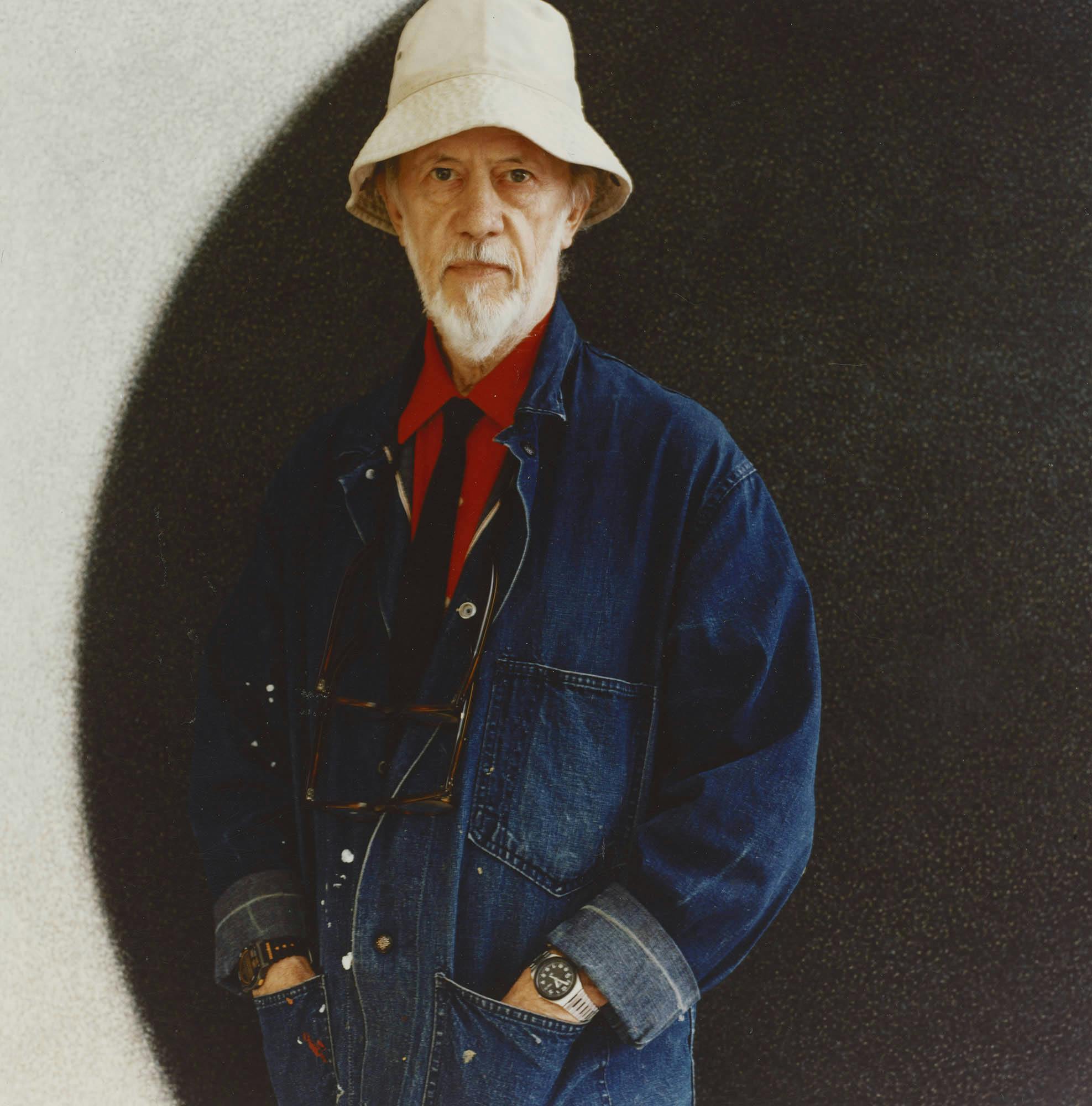
Richard Warren Pousette-Dart was born on June 8, 1916 in Saint Paul, Minnesota to Nathaniel Pousette, a painter and art writer, and Flora Dart, a musician and poet, who hyphenated their last names as a sign of "mutual esteem.”
In 1918 the Pousette-Dart family moved to Valhalla, New York. Nathaniel became a commercial art director at the J. Walter Thompson Company and edited the Distinguished American Artists publication series on Childe Hassam, Robert Henri, Winslow Homer, John Singer-Sargent, Abbott H. Thayer, and J.A.M. Whistler.
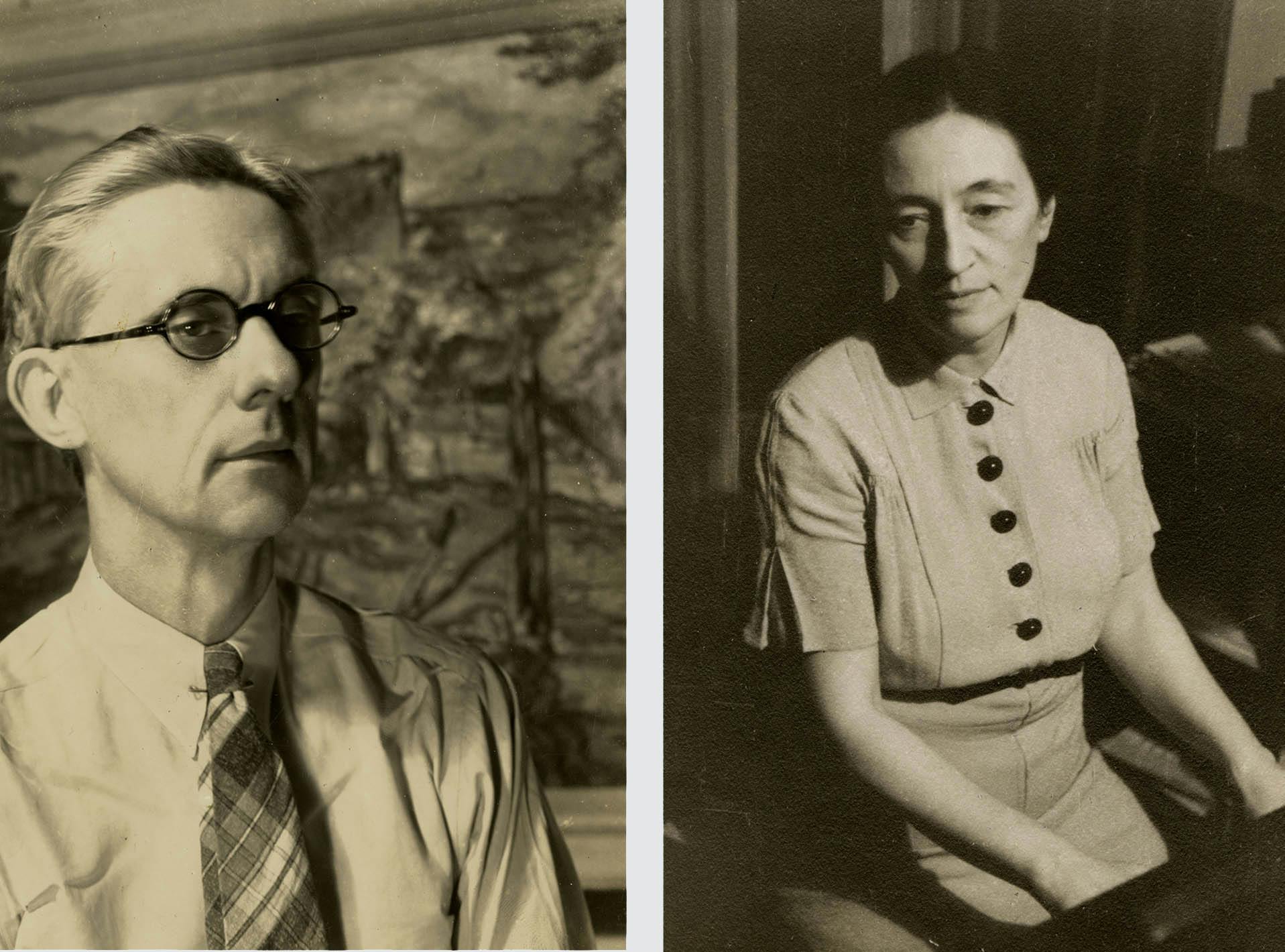
Nathaniel Pousette-Dart and Flora Pousette-Dart
Richard Pousette-Dart’s upbringing was nurtured by a progressive orientation.
Flora Pousette-Dart organized music and poetry salons and maintained an interest in alternative religious movements such as Theosophy; Nathaniel Pousette-Dart collected non-Western works of art and during the mid-1930s published the magazines Art of Today and Art and Artists of Today that advanced modernist American art. Encouraged by his parents, Richard began painting at the age of eight, and in 1928 he and Nathaniel appeared in the New York Times drawing one another’s portraits.
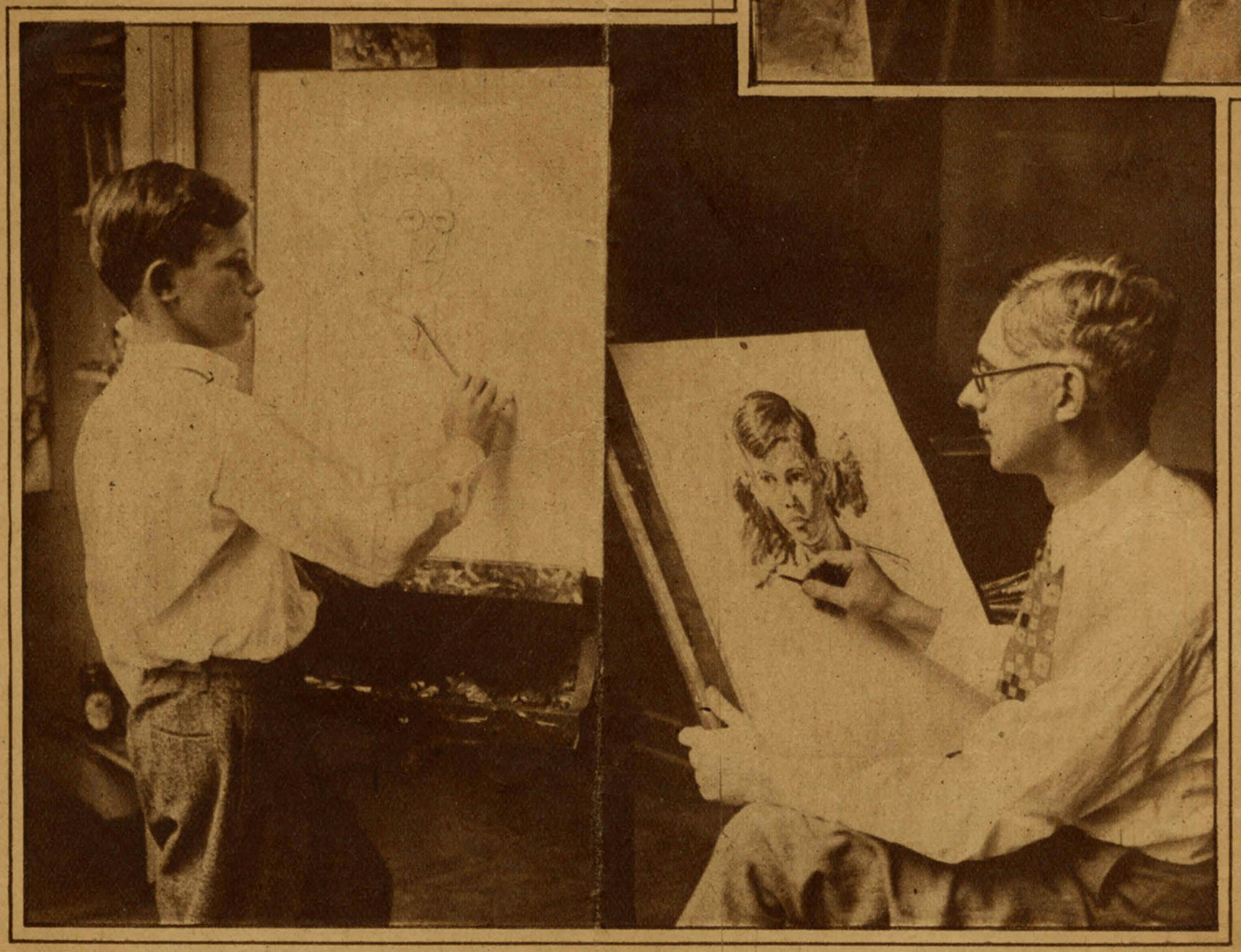
In 1928, Nathaniel Pousette-Dart and 12 year old Richard drawing each other’s portraits. The father-son image appeared in 16 newspapers nationally.
In 1935, Richard Pousette-Dart graduated from the Scarborough School, Scarborough-on-Hudson, New York.
For his senior class magazine, The Beechwood Tree, he contributed the essay “I Have Been Called a Dreamer,” a foundational statement for his lifelong commitment to pacifism. That year, he enrolled at Bard College, Annandale-on-Hudson, but left during his first semester to pursue art independently. At Bard, Pousette-Dart manned a telephone switchboard, signaling his strong interest and aptitude towards mechanical objects and electronics. Throughout his life, Pousette-Dart built and operated ham radios, and modified clocks, watches and cameras in a quest to understand “how things work.”
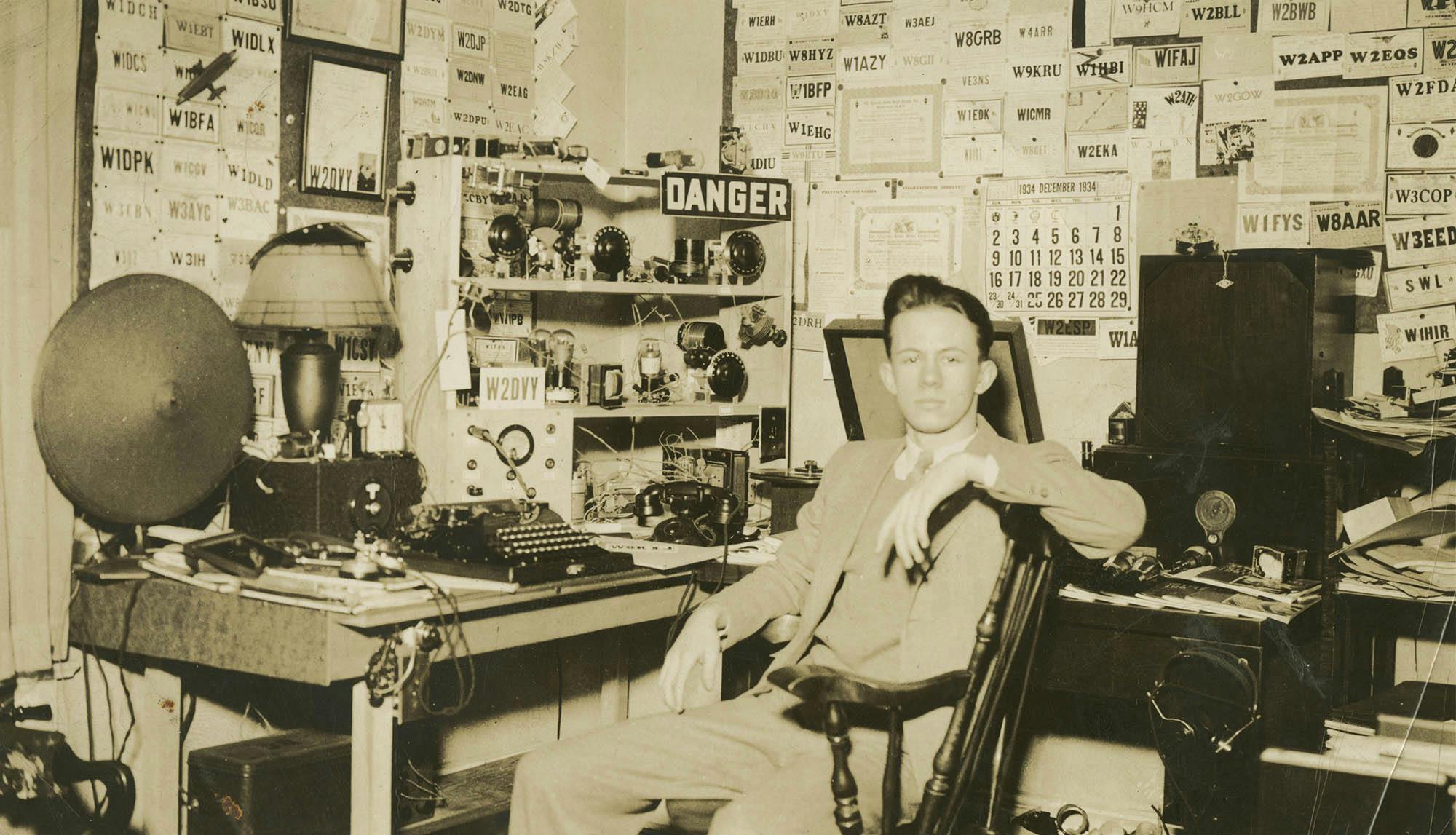
Richard Pousette-Dart with ham radio, c. 1935
By the late 1930s, Pousette-Dart worked in painting and sculpture, and additionally practiced photography.
A dramatic portrait of 1939 shows John D. Graham, whose book System and Dialectics of Art (1937) emphasizes myth and primitivism as avenues to the exploration of the unconscious mind, influencing many young New York abstractionists. During this period, Pousette-Dart worked briefly as an assistant to the sculptor Paul Manship, then as a secretary in the Manhattan photographic retouching studio of Lynn T. Morgan. The latter appointment proved transformative, as Pousette-Dart’s later dot or dab paintings are deeply indebted to his experience scrutinizing composite points of light through the photographic process.
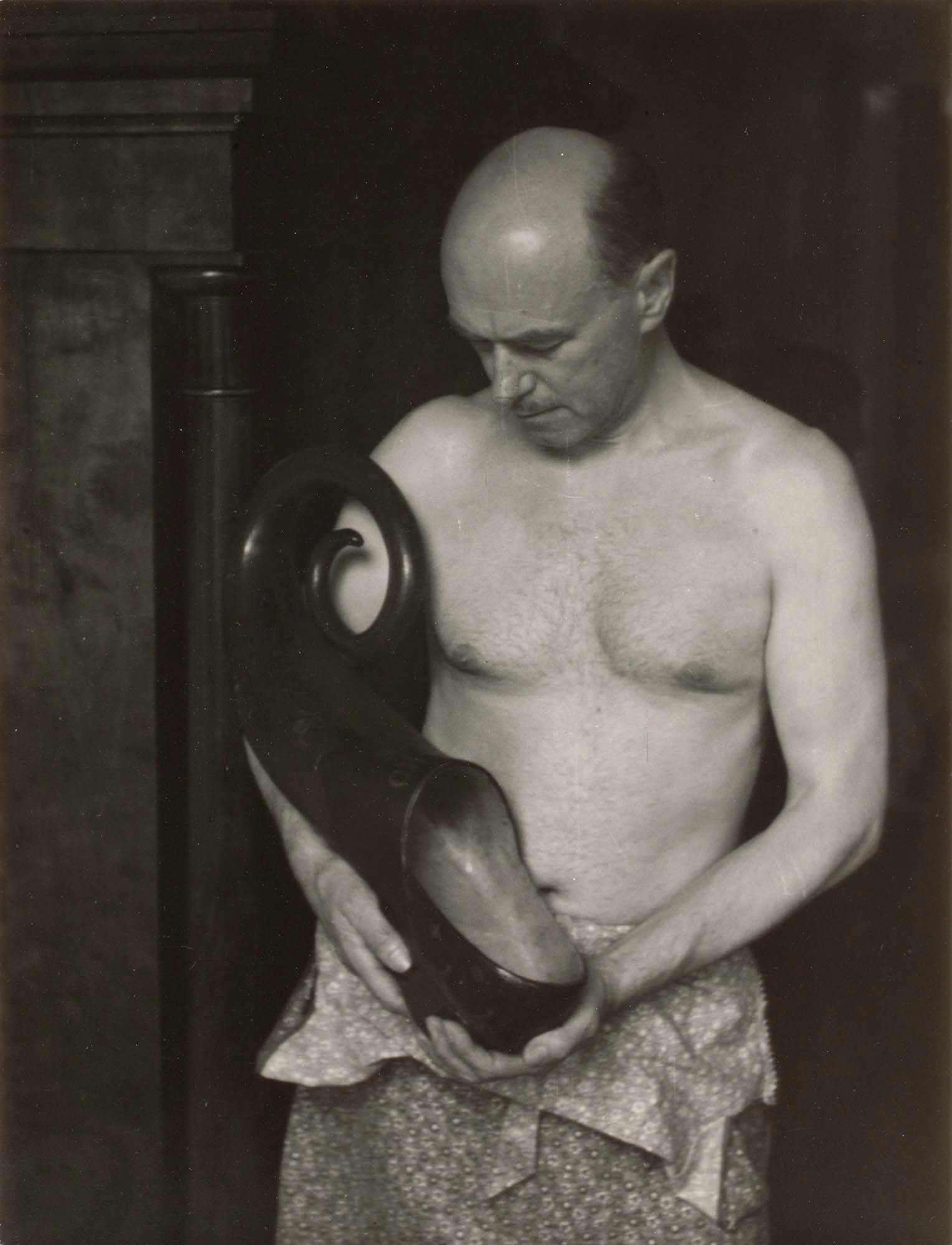
John D. Graham, 1939, gelatin silver print, 13 ½ x 10 ½ in.
During the late 1930s and early 1940s, Pousette-Dart identified as a sculptor, working primarily in direct carving of stone and wood.
Deeply interested in French-born British sculptor Henri Gaudier-Brzeska’s advocacy for non-classical models of figurative abstraction, Pousette-Dart created a series of modest-sized carvings in marble and ebony, as well as the bronze cast Woman Bird Group, 1939. Embracing Native American and African influences, as well as European cubism and surrealism, Pousette-Dart’s work during this period – including hundreds of richly colored works on paper – frequently explores the power of formal relationships through the massing of planes.
_, c. 1937
– The Richard Pousette-Dart Foundation](/_next/image/?url=https%3A%2F%2Fmedia.pousette-dartfoundation.org%2Fchronology%2Fweb_archivalphoto.jpg&w=3840&q=75)
Richard Pousette-Dart with Tennessee Marble, c. 1937
Beginning in the late 1930s, Pousette-Dart began to craft hand-cut flat sculptures in brass.
These pocket-sized works exemplify the art critic Clive Bell’s notion of “significant form” – shapes and organic symbols found in nature that are universally recognized for their aesthetic qualities. Ultimately, these forms reappeared as elemental imagery within Pousette-Dart’s paintings throughout his career, combined and layered into interlocking units that interact as a complex visual vocabulary.
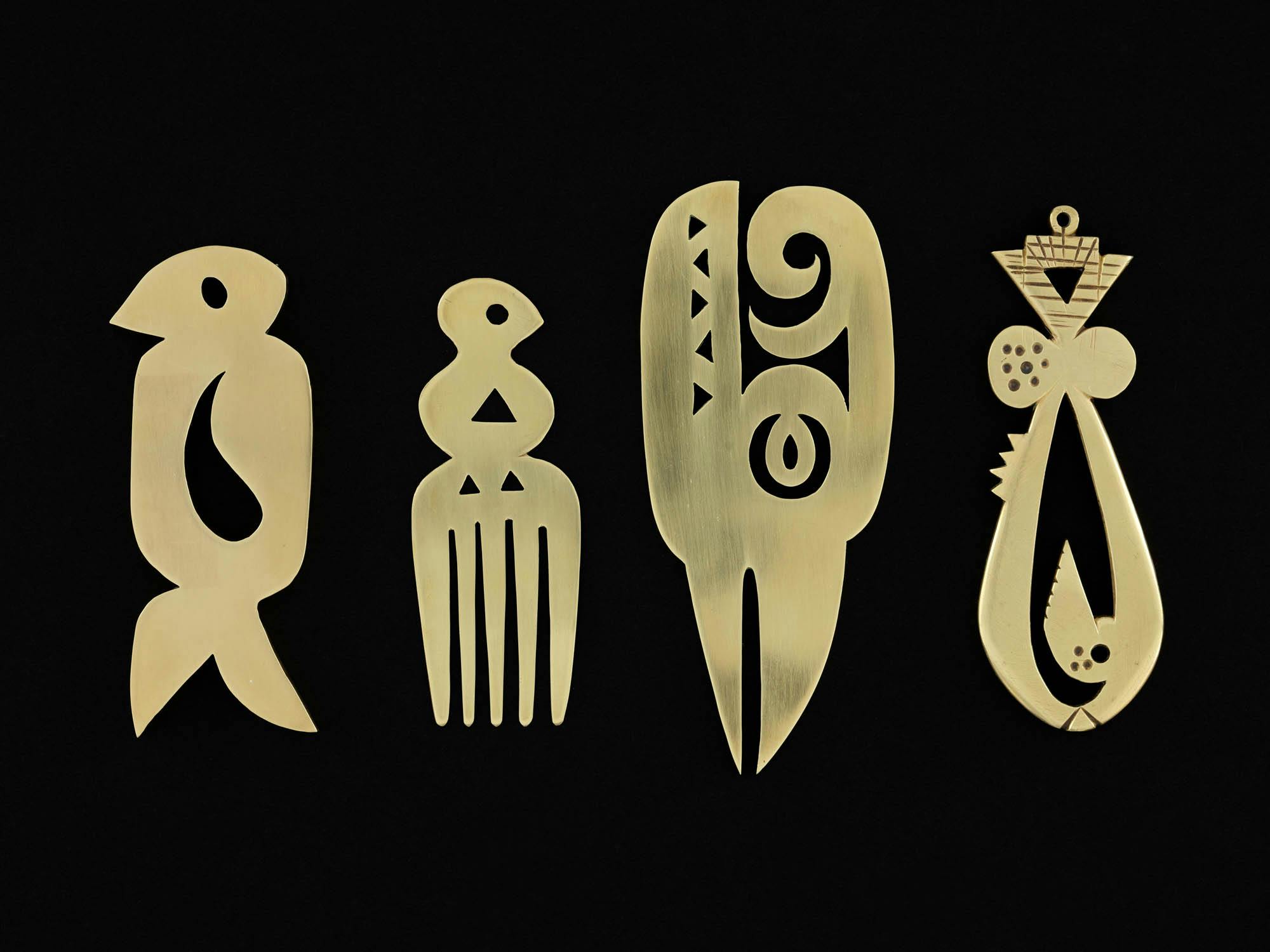
Hand-cut Brasses, undated, dimensions variable between 2 ¾ and 7 in. high
Around 1940, Pousette-Dart shifted his overall emphasis towards painting and 2-dimensional work, re-envisioning the armatures of his sculpture within single, allover planes, as in Archaic Dream of 1940.
During this decade he lived and worked on East 22nd Street in New York City, and by 1941 had relocated to East 56th Street, maintaining a studio overlooking the Queensborough Bridge on nearby 59th Street.
_[Archaic Dream](https://pousette-dartfoundation.org/works/archaic-dream/)_, 1940, ink graphite, oil, gesso on paper, 17 ½ x 22 ¼ in. (44.4 x 56.5 cm)
– The Richard Pousette-Dart Foundation](/_next/image/?url=https%3A%2F%2Fmedia.pousette-dartfoundation.org%2Fchronology%2Frpd_web_inv-4069_archaic-dream_1940.jpg&w=3840&q=75)
Archaic Dream, 1940, ink graphite, oil, gesso on paper, 17 ½ x 22 ¼ in. (44.4 x 56.5 cm)
In October of 1941, Pousette-Dart’s first one-person show was held at the non-profit Artists’ Gallery, New York. Works including Head of a Woman—a totemic female figure with a secondary mask in the place of a mouth—reveal a strong predilection towards heavily-abstracted imagery referencing non-western sources, a hallmark of the nascent Abstract Expressionist movement.
Other paintings from this period, including Desert, reveal that Pousette-Dart was already moving decisively towards large-scale, complex arrangements of elemental imagery that place him as an early innovator among leading mid-century American abstractionists.
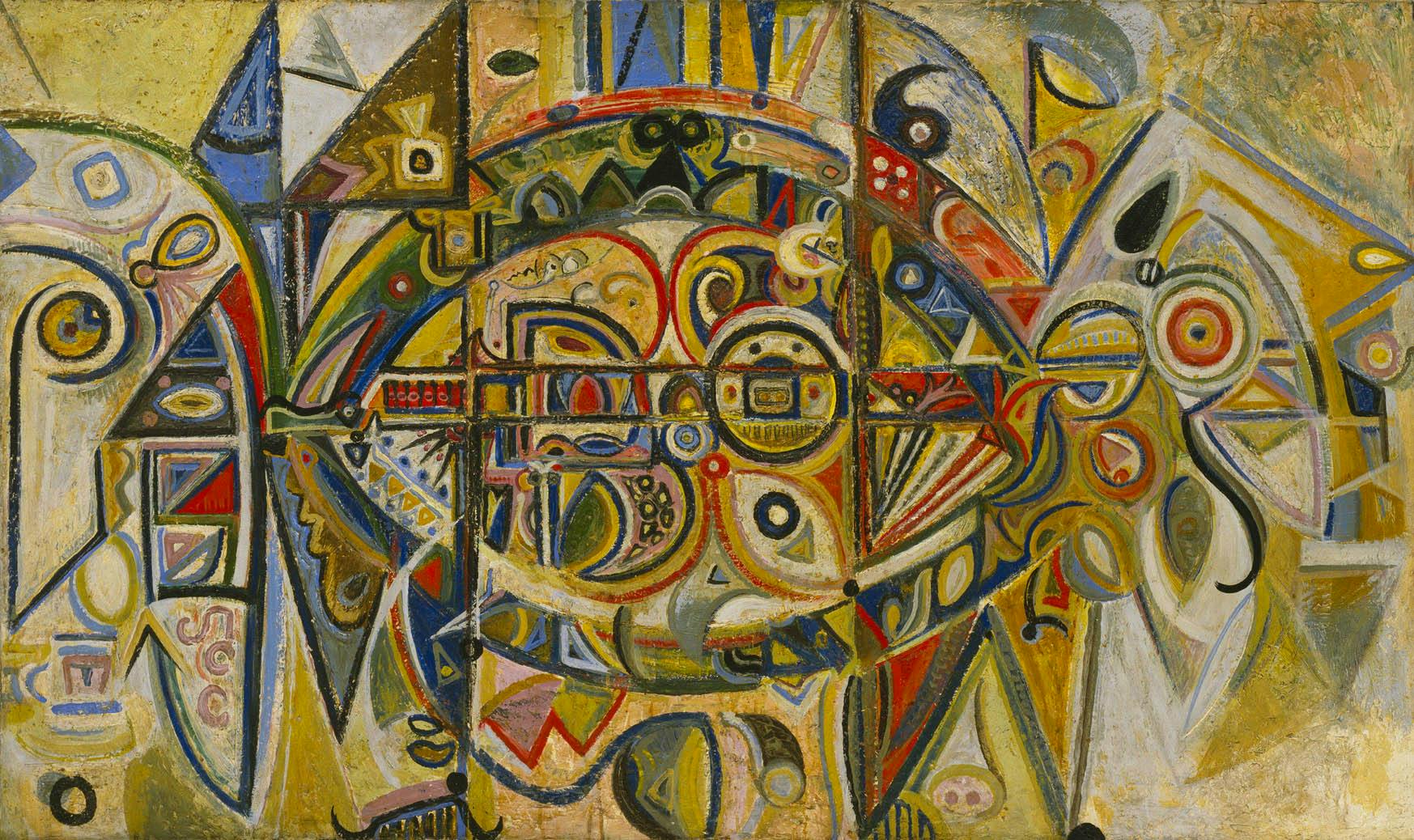
Desert, 1940, oil on canvas, 43 x 72 in. (109.2 x 182.9 cm). The Museum of Modern Art, New York, Given anonymously (1099.1969)
Over the span of 1941 and 1942, Pousette-Dart completed Symphony No. 1, the Transcendental. At 11 feet 8 inches in width, it is regarded, along with Jackson Pollock’s Mural and Arshile Gorky’s The Liver is the Cock’s Comb, as responsible for introducing large-scale easel painting to Abstract Expressionism.
Monumental in size and densely painted in more than 40 layers, the work is organized upon an uneven grid containing circles, teardrops, ovals, arcs, diamonds, and crosses—forms celebrated in Pousette-Dart’s brass sculptures. The title of the painting suggests an orchestral balance of harmony and counterpoint—Pousette-Dart was a passionate admirer of the works of Bach—and alludes directly to the transcendental qualities of spiritual unity and wholeness.
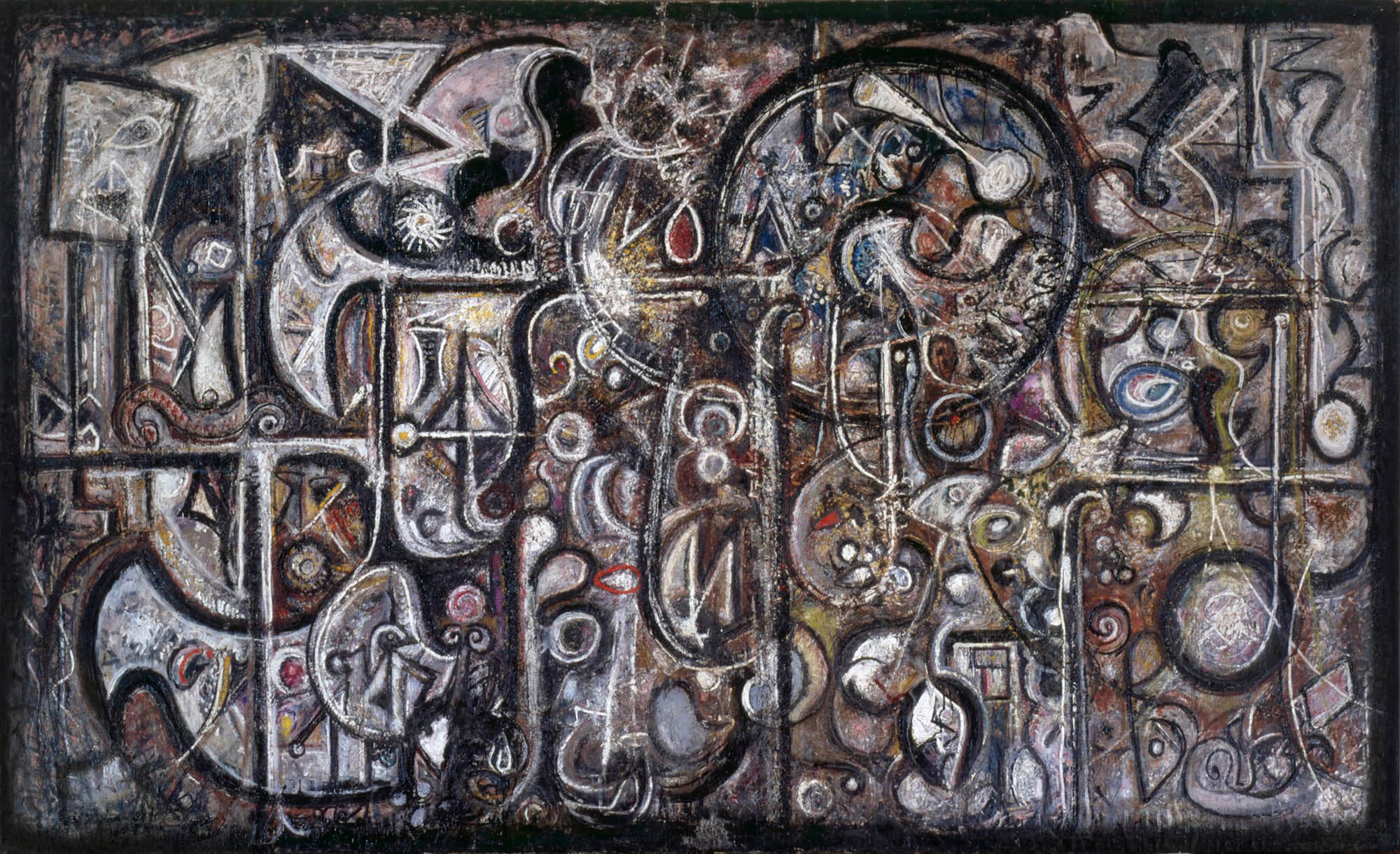
Symphony Number 1, The Transcendental, 1941–42, oil on canvas, 86 x 140 ½ in. (218.4 x 356.9 cm). The Metropolitan Museum of Art, New York, Purchase, Lila Acheson Wallace Gift (1996.367)
In 1943, the solo exhibition “Forms in Brass” was held the at the Marian Willard Gallery, and soon after Pousette-Dart participated in important group exhibitions at Howard Putzel’s 67 Gallery, Peggy Guggenheim’s Art of this Century, and annual exhibitions at the Federation of Modern Painters and Sculptors, where he served as secretary.
During this period, Pousette-Dart worked across media that included painting, drawing, hand-cut brasses and collage, experimenting widely with pigments and approaches to materials, including incorporating sand and small objects into paintings, layering materials to produce dense, textured surfaces, and scraping and scoring both paintings and works on paper. His painting was shown in dialogue with works by Jackson Pollock, Arshile Gorky, Willem de Kooning, Mark Rothko and others during this critical phase for the maturation for American abstract painting.
_, c. 1942-43, Photograph by Maggie Meredith
– The Richard Pousette-Dart Foundation](/_next/image/?url=https%3A%2F%2Fmedia.pousette-dartfoundation.org%2Fchronology%2Fmeredith-03_web_2018-05-29_r.jpg&w=3840&q=75)
Richard Pousette-Dart working on the watercolor Sea World, c. 1942-43, Photograph by Maggie Meredith
Between 1945 and 1947 Pousette-Dart exhibited in notable gallery exhibitions and museum invitationals, culminating in an important solo show at Art of This Century in which Symphony no. 1, the Transcendental was exhibited for the first time (it had been too large to navigate the stairway at the Marian Willard Gallery).
Crucifixion, Comprehension of the Atom of 1944, featured in this exhibition, reveals Pousette-Dart’s rapid maturation as an artist. The painting invokes, on one hand, the tragic devastation of war, which Pousette-Dart railed against as a conscientious objector; on the other, the dynamism of new frontiers in science and the expanding American psyche that propelled modern art forward immediately after World War II.
_, 1941–43, ink oil, gouache, and watercolor on paper, 22 ⅜ x 31 ⅛ in. (56.8 x 79 cm).
Albertina, Vienna, Austria, Permanent loan from the Austrian Ludwig Foundation for Art and Science (DL104r/v)
– The Richard Pousette-Dart Foundation](/_next/image/?url=https%3A%2F%2Fmedia.pousette-dartfoundation.org%2Fchronology%2Frpd_web_inv-1152_boundless-atom.jpg&w=3840&q=75)
The Boundless Atom, 1941–43, ink oil, gouache, and watercolor on paper, 22 ⅜ x 31 ⅛ in. (56.8 x 79 cm). Albertina, Vienna, Austria, Permanent loan from the Austrian Ludwig Foundation for Art and Science (DL104r/v)
In 1948, Pousette-Dart’s inaugural exhibition “Brasses and Photographs” at the newly-established Betty Parsons Gallery presented selections of his photographs ranging from nature studies to portraits of colleagues, including Mark Rothko, Barnett Newman, Betty Parsons and filmmaker Robert Flaherty.
Showcasing his own darkroom experiments and printing, many of these photographs utilize double-exposure, layering and other techniques to create ethereal and sometimes painterly effects. Around this time, Saul Leiter moved to New York to study painting with Pousette-Dart, and ultimately choose to pursue photography due to his teacher’s influence.
,_ c. 1948, gelatin silver print, 9 ¼ x 8 ½ in. (23.5 x 21.6 cm). Whitney Museum of American Art, New York (T.2017.103)
– The Richard Pousette-Dart Foundation](/_next/image/?url=https%3A%2F%2Fmedia.pousette-dartfoundation.org%2Fchronology%2Fweb_inv-1865.jpg&w=3840&q=75)
Betty Parsons, c. 1948, gelatin silver print, 9 ¼ x 8 ½ in. (23.5 x 21.6 cm). Whitney Museum of American Art, New York (T.2017.103)
By 1949, Pousette-Dart was recognized by major museums, including annuals at the Whitney Museum and the Art Institute of Chicago, and included in the exhibition “Modern American Painting: Movements and Countermovements (Younger Painters of the 1940s)” at the Museum of Modern Art.
The following year, MoMA acquired Number 11: A Presence. The theme and title “Presence” remained a recurring interest for Pousette-Dart, and Presence paintings often feature a dominant visual field with diffuse transitions to surrounding imagery, mirroring the divide between the conscious and unconscious, and the physical and immaterial worlds.
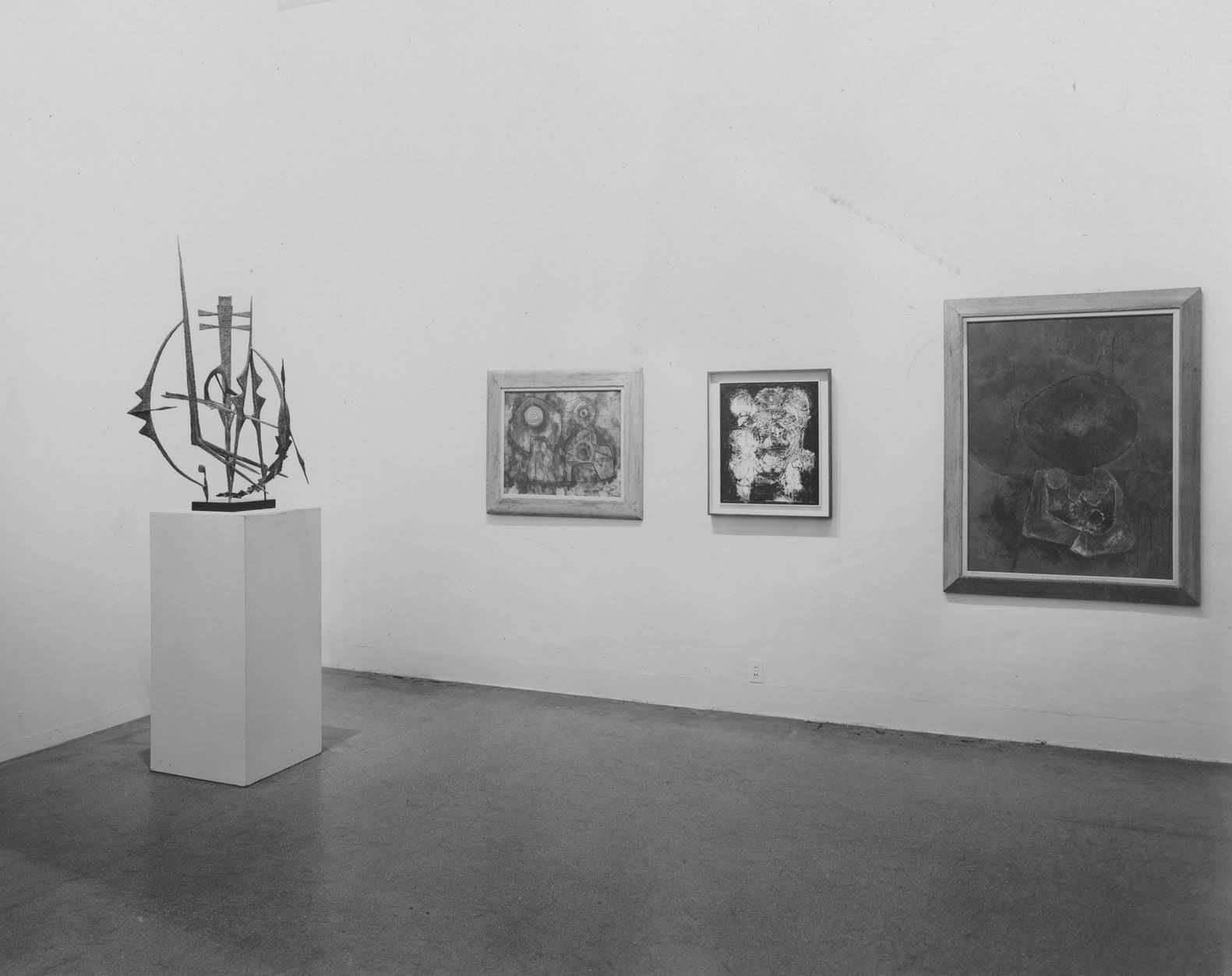
Number 11: A Presence, 1949 on view in the exhibition Abstract Painting and Sculpture in America, Museum of Modern Art, 1951 (right center).
By the advent of the 1950s, Pousette-Dart had received considerable public recognition along with his Abstract Expressionists colleagues.
He attended meetings at the informal Greenwich Village school “Subjects of the Artist,” organized by William Baziotes, David Hare, and Robert Motherwell, and made important intellectual contributions during a three-day closed conference now known as “Studio 35.” In 1950, Pousette-Dart joined in signing an open letter to the president of the Metropolitan Museum of Art rejecting the exhibition American Painting Today – 1950. This boycott received coverage in Life magazine that featured the now-iconic photograph by Nina Leen known as “The Irascibles." In October of 1951, Look magazine published a photo essay on Pousette-Dart titled “Spontaneous Kaleidoscopes” that featured his painting, sculpture and brasses, as well as poetry.
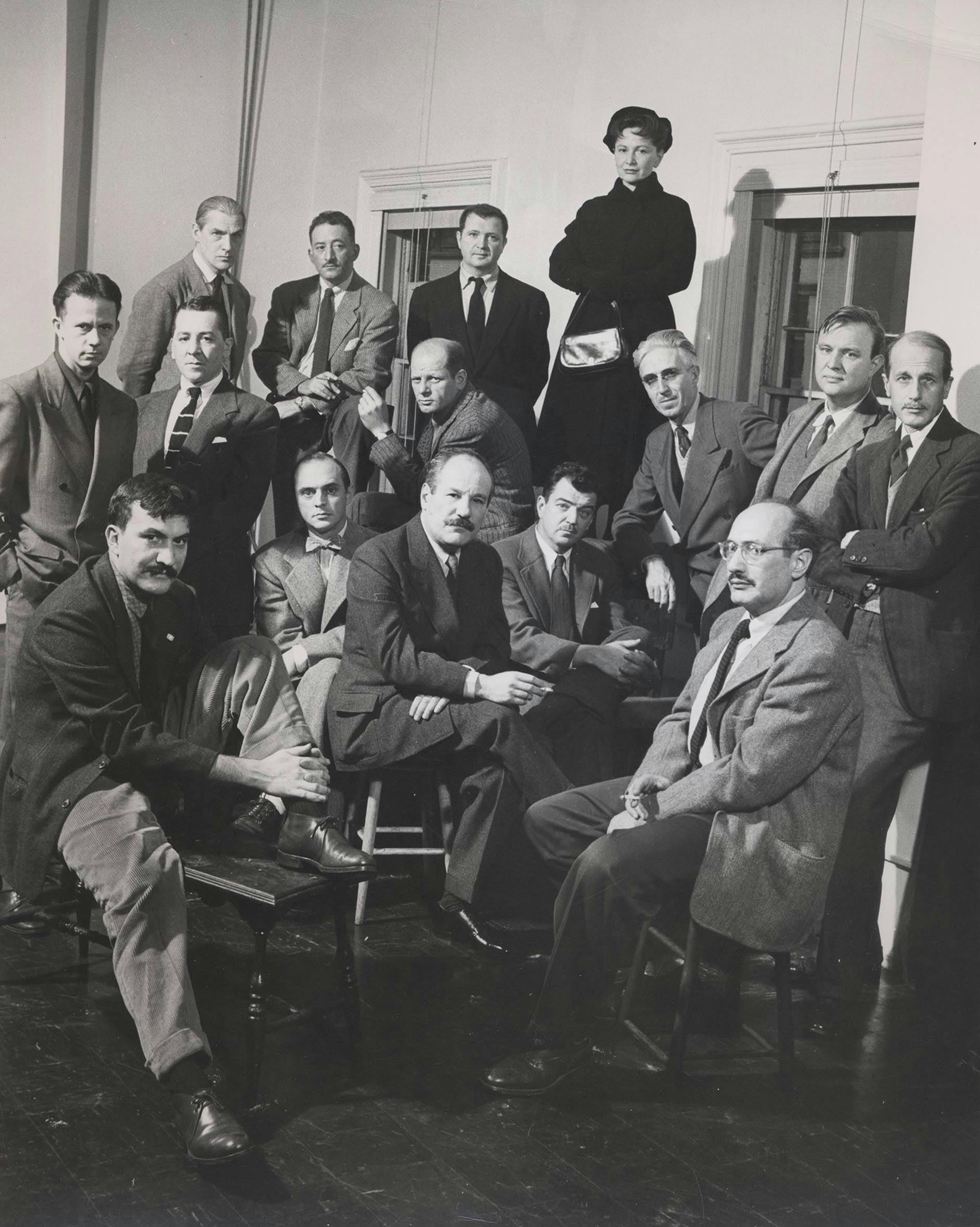
The Irascibles, photograph by Nina Leen, 1950
In December of 1950 the Pousette-Dart family moved from East 56th Street to Sloatsburg, New York, an hour north of New York City.
Although the move was precipitated by the impending demolition of the apartment building in which they lived, Richard Pousette-Dart quickly embraced his new rural surrounds and larger studio, and that year he was awarded a Guggenheim fellowship that allowed him to assert himself more comprehensively as an artist. In his one-man exhibition at Betty Parsons Gallery of September–October of 1951 he exhibited, a series of sculptures created from steel wire, sheet metal and found objects alongside his paintings. Working across mediums, imagery became concentrated into apparition-like centralized forms, leading toward the creation of large-scale paintings that feature a single or dominant shape.
,_ 1951, steel wire and sheet metal, painted gray, 49 ½ x 28 x 14 in. (125.7 x 71.1 x 35.6 cm)
– The Richard Pousette-Dart Foundation](/_next/image/?url=https%3A%2F%2Fmedia.pousette-dartfoundation.org%2Fchronology%2Frpd_web_inv-1624_creature-of-clouds.jpg&w=3840&q=75)
Creature of Clouds (Wire Sculpture #3), 1951, steel wire and sheet metal, painted gray, 49 ½ x 28 x 14 in. (125.7 x 71.1 x 35.6 cm)
Addressing the notion that his outlook was spiritual in orientation, Richard Pousette-Dart delivered a series of short talks in the 1950s, including “What is the Relationship between Religion and Art?” at the Union Theological Seminary in conjunction with the 1951 exhibition, Contemporary Religious Art and Architecture.
Disinclined in general towards institutionalized religion, Pousette-Dart read excerpts from his studio notebooks, positing: “Art is always mystical in its final meaning; it is structure which stands up by the presence and significance of its own meaning. It is a thing within itself, mirroring different things to different minds, stemming from and in accord with every work of art ever created; a thing of awe and wonder whose meaning is the measure of man’s estate in earth.”
,_ 1940s, watercolor gouache, pen and ink, and graphite with collage on wove paper, 9 x 6 ¼ x 1 ½ in. (22.9 x 15.9 x 3.8 cm)
– The Richard Pousette-Dart Foundation](/_next/image/?url=https%3A%2F%2Fmedia.pousette-dartfoundation.org%2Fchronology%2Fweb_pousette-dart_notebook-b-114_knights-of-pythias_1940s.jpg&w=3840&q=75)
Knights of Pythias, 1940s, watercolor gouache, pen and ink, and graphite with collage on wove paper, 9 x 6 ¼ x 1 ½ in. (22.9 x 15.9 x 3.8 cm)
Living and working in Sloatsburg, New York afforded Richard Pousette-Dart not only a detached painting studio, but a basement photography and electronics workshop. In 1953, he was awarded third prize in Photography magazine’s international photo competition for his image Joanna.
This recognition, in turn, garnered demand for his photographic work, and during the following years he completed commissions for Condé Nast and other publishers, especially Charm magazine. Preferring to concentrate on subjects within the arts, his portraits include those of choreographer Bob Fosse and jazz luminaries, such as Thad Jones and The Modern Art Quartet.
_, 1952, gelatin silver print, 13 ½ x 9 in. (34.3 x 22.9 cm)
– The Richard Pousette-Dart Foundation](/_next/image/?url=https%3A%2F%2Fmedia.pousette-dartfoundation.org%2Fchronology%2Fweb_rpd_print_10_003.jpg&w=3840&q=75)
Joanna with Cat, 1952, gelatin silver print, 13 ½ x 9 in. (34.3 x 22.9 cm)
Pousette-Dart’s 1955 exhibition at the Betty Parsons Gallery titled “Predominantly White Paintings” introduced a radical shift in his painting. His acute observation of the effects of light, distilled within a restrained palette of graphite drawn on titanium white, resulted in paintings with an exceptional range of tonality and expression.
Employing variably drawn line and occasional applications of tints of color, the White Paintings achieve both depth and an effect of ethereal luminosity. As Pousette-Dart described the White Paintings: “Sometimes it seems as if I just paint one painting, from a white canvas through an experience of colors and lines and then back to white again, yet always enriched, nothing is ever lost…, a final experience of white on white having traveled through and through, like an area of ground wherein much dancing has occurred. Sometimes I feel my paintings exist not on canvas but in space, like musical progressions..."
,_ 1951, oil and graphite on linen, 53 ½ x 60 ¾ in. (135.9 x 154.3 cm). National Gallery of Art, Washington, D.C., Patrons' Permanent Fund (2006.38.1)
– The Richard Pousette-Dart Foundation](/_next/image/?url=https%3A%2F%2Fmedia.pousette-dartfoundation.org%2Fchronology%2Frpd_web_inv-199_white-garden-sky.jpg&w=3840&q=75)
White Garden, Sky, 1951, oil and graphite on linen, 53 ½ x 60 ¾ in. (135.9 x 154.3 cm). National Gallery of Art, Washington, D.C., Patrons' Permanent Fund (2006.38.1)
By the late 1950s, Pousette-Dart's visual explorations had returned decisively to color, especially as energized upon the surfaces of densely painted canvases. An important group of works now referred to as Gothic paintings celebrate magnificent stained-glass windows of 14th-century cathedrals, jewel-encrusted covers of liturgical books and opulent reliquaries.
The label Byzantine also applies, linking effects achieved on canvas to the shimmering qualities of mosaics. The monumental Blood Wedding, first exhibited at the Whitney Annual of 1958, recalls both the diverse themes and approaches of Pousette-Dart’s earlier abstract expressionist painting and marked a move towards simplified fields of color built from dabs of pigment that defined the artist’s paintings from 1960 onward. Nearly sculptural in density, Blood Wedding plots the interplay of line and form in concert with intense luminosity that radiates through multiple layers of rich and brilliant oil pigment.
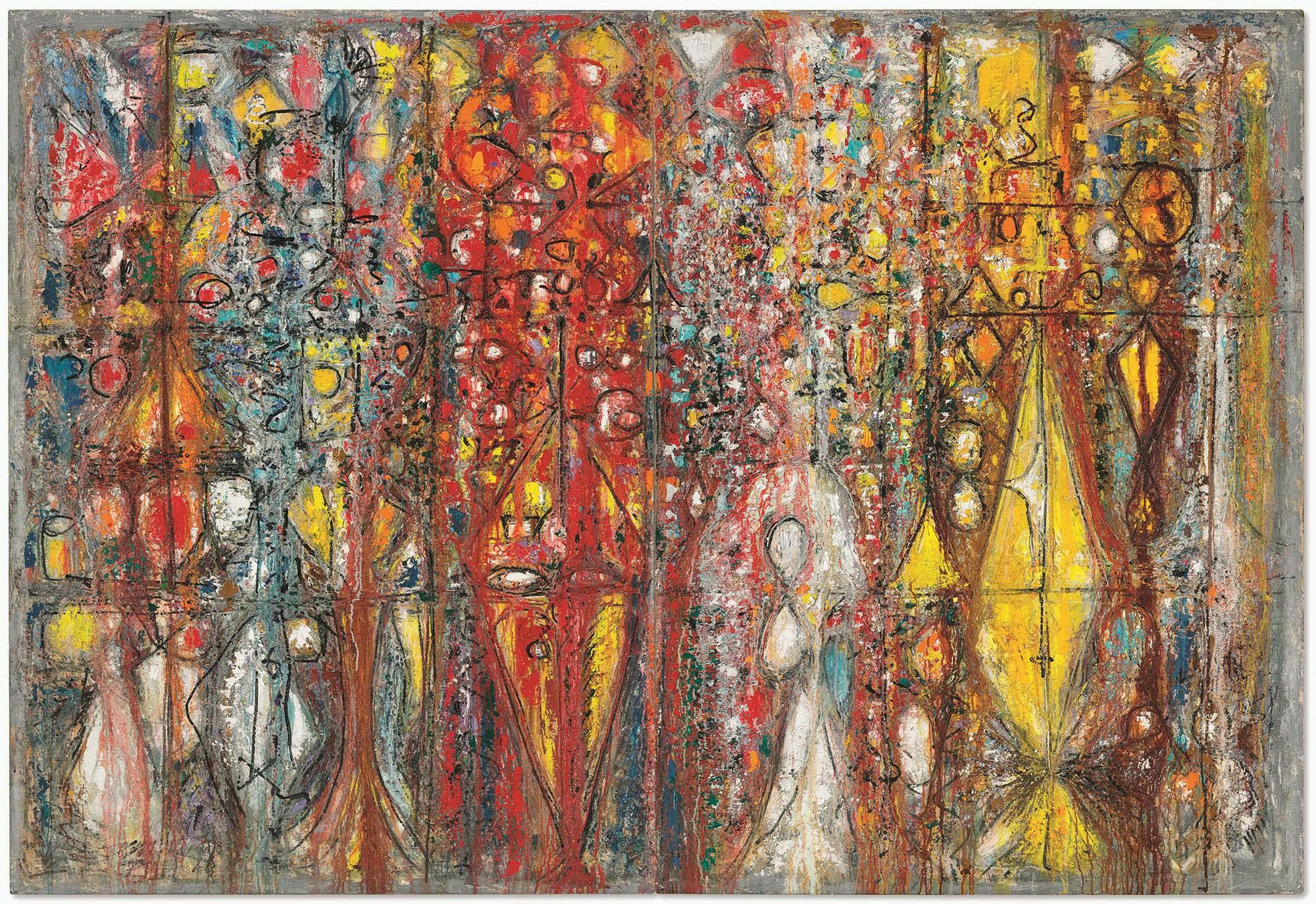
Blood Wedding, 1958, oil on linen, 72 x 112 in. (182.9 x 284.5 cm) Diptych
In 1959, the Pousette-Dart family moved to a 1913 stone carriage house in Suffern, New York, where the artist lived and worked for the remainder of his life.
The nearby Ramapo Mountains, abundant foliage and expansive skies quickly informed his imagery, not as illustrations, but as highly sensitive recordings of harmonious forces. Meditation on the Drifting Stars, for example, is an abstract celestial landscape that conveys expanding and converging cross-sections of seeming infinitude. In such works, Pousette-Dart applied thousands of points of paint to surfaces with the tip of a brush, equivalent to the particles that constitute light. Likening this praxis to his early experience retouching photographs, the artist noted: “all form is made up of so many points of light and everything has a molecular structure… I’m concerned with form and the nature of light, and I find that I can achieve variations in form through many touches of the brush in a way that I can’t with a single stroke of the brush.”
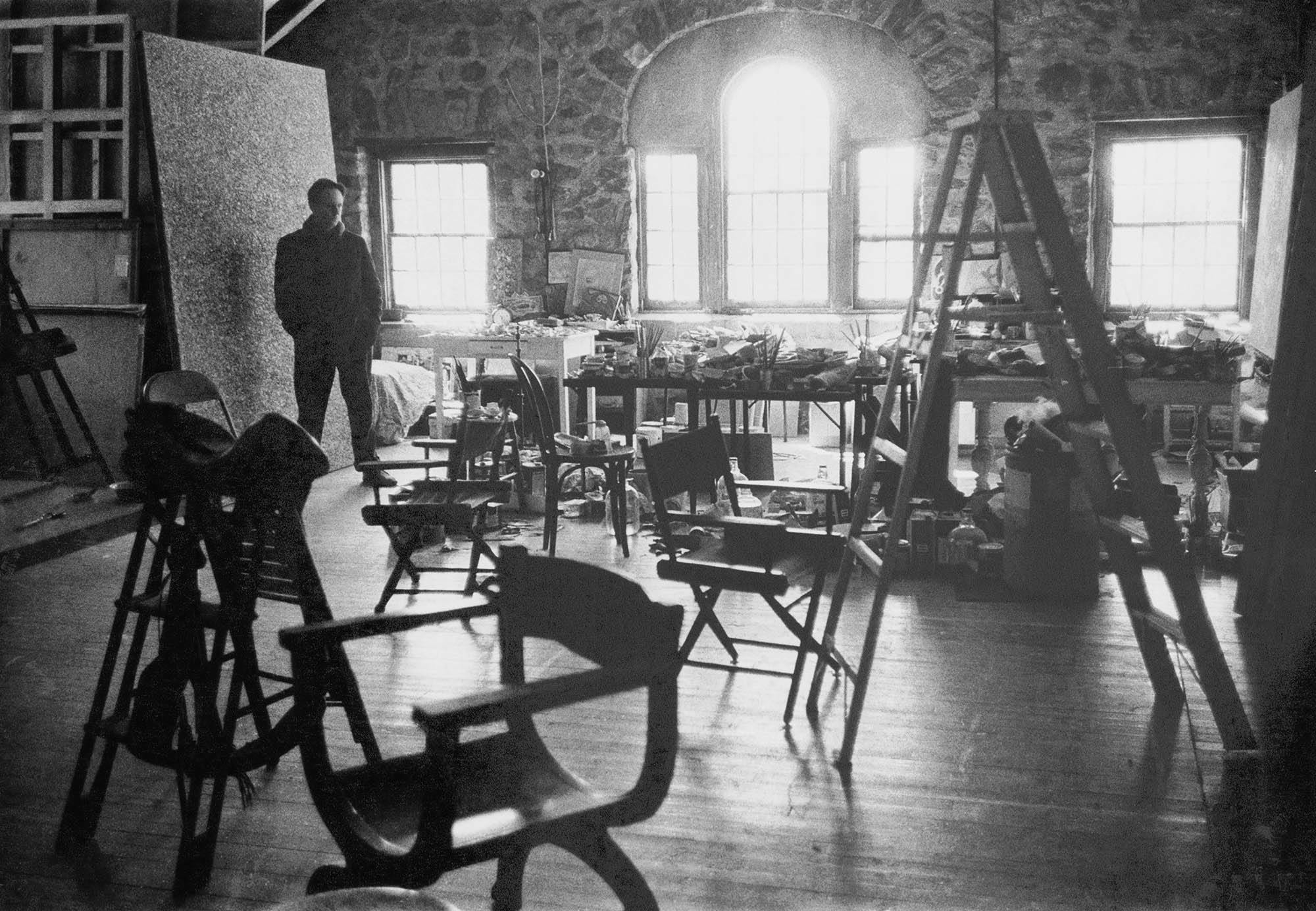
Suffern Studio, 1963. Photograph by Herb Breuer
Following his first one-man exhibition at the Whitney Museum of American Art in 1963, the Museum of Modern Art staged “Richard Pousette-Dart: Presences” in 1969–70 that traveled to 10 venues throughout the United States.
Both exhibitions presented recent works created through small touches of contrasting color that foreground a pulsating effect and place emphasis on the process of seeing as they engender a consciousness of interconnectedness and perception of over-all unity. In works like Transcendent Presence and Sky Presence, Morning, Pousette-Dart noted his process of “tuning;” achieving an asymmetrical balance that makes all parts of the canvas vibrate in unity and resonate over a temporal duration, like a musical composition.
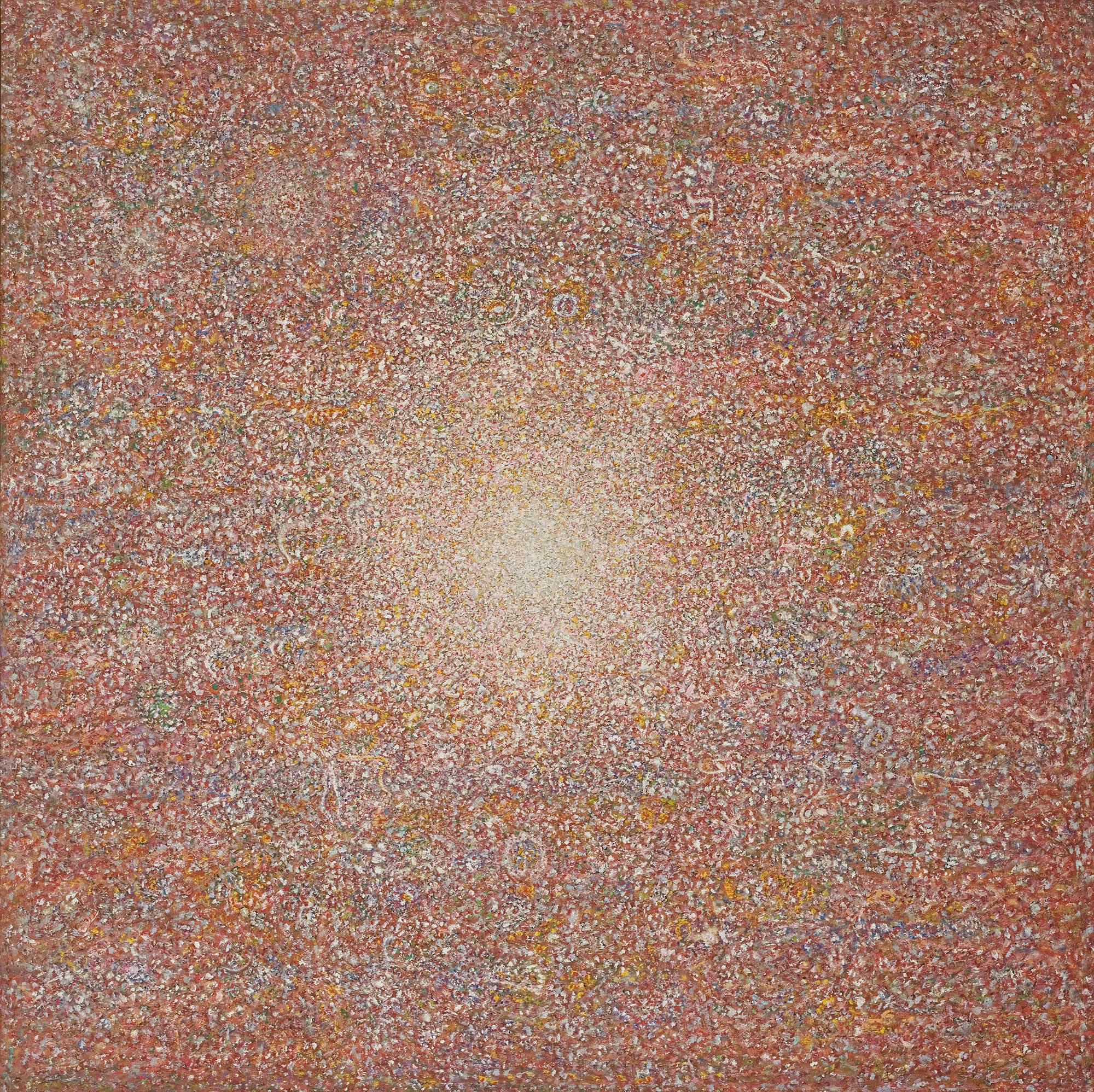
Transcendent Presence, 1966–67, oil on canvas, 61 x 61 in. (154.9 x 154.9 cm). Grand Rapids Art Museum, Michigan, Gift of the Estate of Helen Burke (2005.2)
From 1970–74 Pousette-Dart served on the faculty of Sarah Lawrence College, expanding his role as teacher from previous appointments at the New School for Social Research and Columbia University during the previous decades.
Believing in individual expression over traditional art training, he posited to his students: “mandatory skills are destructive to the inspiration of true, original, creative thinking and feeling,” advocating instead that all artists should strive to “get on the thread of their own beings.” During this period, he traveled to Europe for the first time, including an extended working trip to Antibes, France. In 1974, he completed a mural commission for the North Bronx Central Hospital, Presence Healing Circles, deeply motivated by the healing powers of abstract art within a public setting.
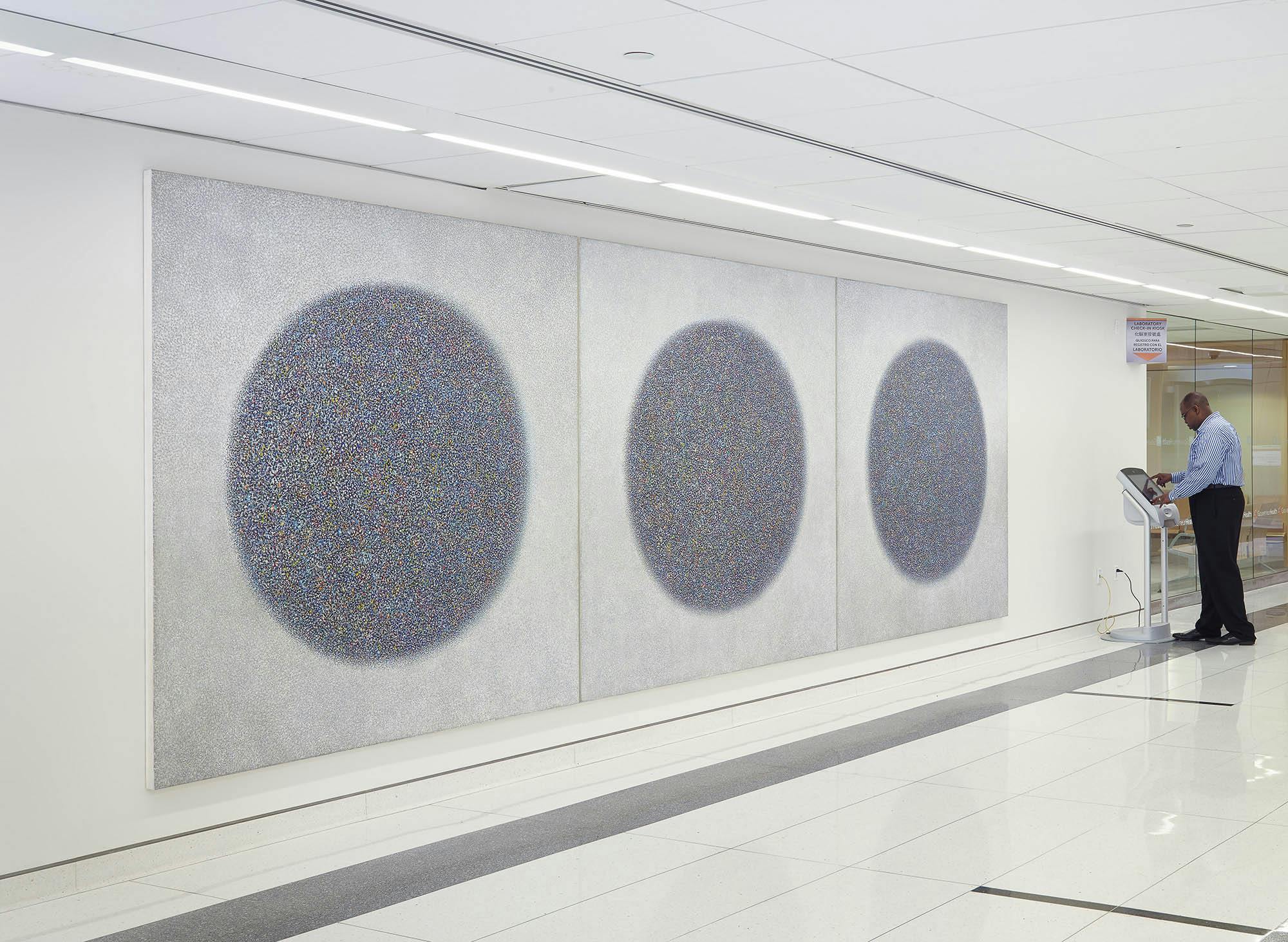
Presence, Healing Circles (Installation), 1973–74, acrylic on canvas, 84 x 252 in. (213.4 x 640.1 cm). Collection of North Central Bronx Hospital in Corperation with New York State Facilities and Development Corporation
Between 1978 and 1980, Pousette-Dart created a series of black and white paintings and works on paper that are minimal in form, but richly textured with evocative surfaces.
The hieratic black and white motifs are a dramatic shift from allover color fields of vibrating light in earlier paintings, yet the limited palette displays an extraordinary range of tonalities. Works such as Circles, One Spiral concentrate smaller component shapes into an array by use of a highly textured application of acrylic. Burning Black Circle integrates gravel, wood chips, leaves and sticks into a composition that is simultaneously a burst and circle, extending painterly approaches to imagery into three-dimensions.
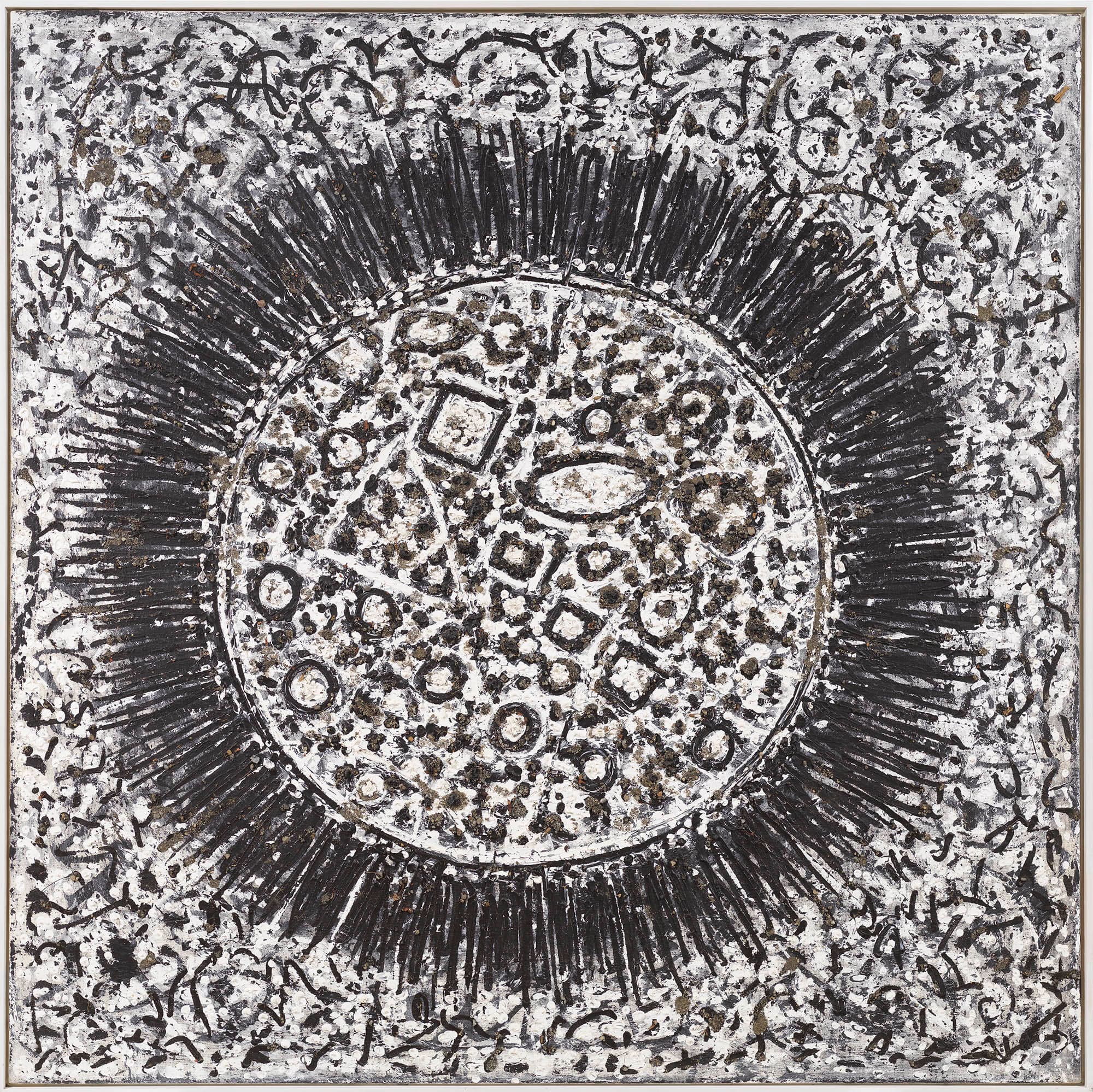
Burning Black Circle (Radiance, Fiery Circle), 1978–80, acrylic gravel, wood chips, leaves, and sticks on linen, 80 x 80 in. (203.2 x 203.2 cm)
In 1979-1980, Richard Pousette-Dart embarked on an intensive program of fine-art printmaking, a medium he had first experimented with in the late 1930s.
Working with master printer Sylvia Roth at the Rockland Foundation in Nyack, New York, he approached etching through traditional means – hand-sanding plates, preparing surfaces with hard ball ground and smoke, and incising plates with diamond needles. He printed on German paper with a hand-operated press. For a large number of etchings, Pousette-Dart further added and reworked imagery through the addition of acrylic, gouache and charbonnel ink, creating unique and often colorful impressions.
,_ 1980, etching with acrylic, plate: 8 x 9 ⅞ in. (20.3 x 25.1 cm), sheet: 13 5/8 x 16 5/8 in. (34.6 x 42.2 cm)
– The Richard Pousette-Dart Foundation](/_next/image/?url=https%3A%2F%2Fmedia.pousette-dartfoundation.org%2Fchronology%2Frpd_web_inv-1605_blue-sonata.jpg&w=3840&q=75)
Blue Sonata, 1980, etching with acrylic, plate: 8 x 9 ⅞ in. (20.3 x 25.1 cm), sheet: 13 5/8 x 16 5/8 in. (34.6 x 42.2 cm)
By the 1980s Pousette-Dart had achieved wide recognition as an artist.
He received the inaugural Distinguished Lifetime in Art award from the Louis Comfort Tiffany Foundation, his 1981 exhibition Richard Pousette-Dart: Presences: Black and White was acclaimed by critic Hilton Kramer in The New York Times as best exhibition of the year, and he was invited to exhibit in the main pavilion by the International Committee of the 40th Venice Biennale. During the decade he taught painting at the Art Students League, New York and was appointed the Milton Avery Distinguished Visiting Professor of Arts at Bard College. An inveterate experimenter with non-traditional forms of paint and materials, he expanded his decades-long interest in collage to include heavily-textured constructions that integrate found and everyday objects into painted assemblages. Combining materials as wide-ranging as string, metal washers, discarded paper cups, Styrofoam and children’s plastic toys, these assemblages combine the practices of painting and sculpture that are the backbone of his lifelong studio practice.
,_ 1983–85, acrylic and mixed media on linen, 40 x 80 in.
(101.6 x 203.2 cm)
– The Richard Pousette-Dart Foundation](/_next/image/?url=https%3A%2F%2Fmedia.pousette-dartfoundation.org%2Fchronology%2Frpd_web_inv-473_down-avenue-b-red_1983-85.jpg&w=3840&q=75)
Down Avenue B, Red, 1983–85, acrylic and mixed media on linen, 40 x 80 in. (101.6 x 203.2 cm)
In 1990, the most comprehensive retrospective exhibition of the artist’s work, Richard Pousette-Dart, was organized by the Indianapolis Museum of Art.
For the show, the Museum commissioned a monumental bronze door by Pousette-Dart, Cathedral, cast at Tallix Foundry and based on a painting of the same name. At 10 feet by 10 feet, Cathedral continues to adorn the pavilion designed by the architect Edward Larrabee Barnes at the renamed Newfields. Between 1991 and 1992, Richard Pousette-Dart traveled to the Detroit Institute of Arts; the Columbus Museum in Columbus, Georgia; and The Phillips Collection, in Washington, D.C. On October 25, 1992, Richard Pousette-Dart died in New York City after a prolonged battle with cancer.
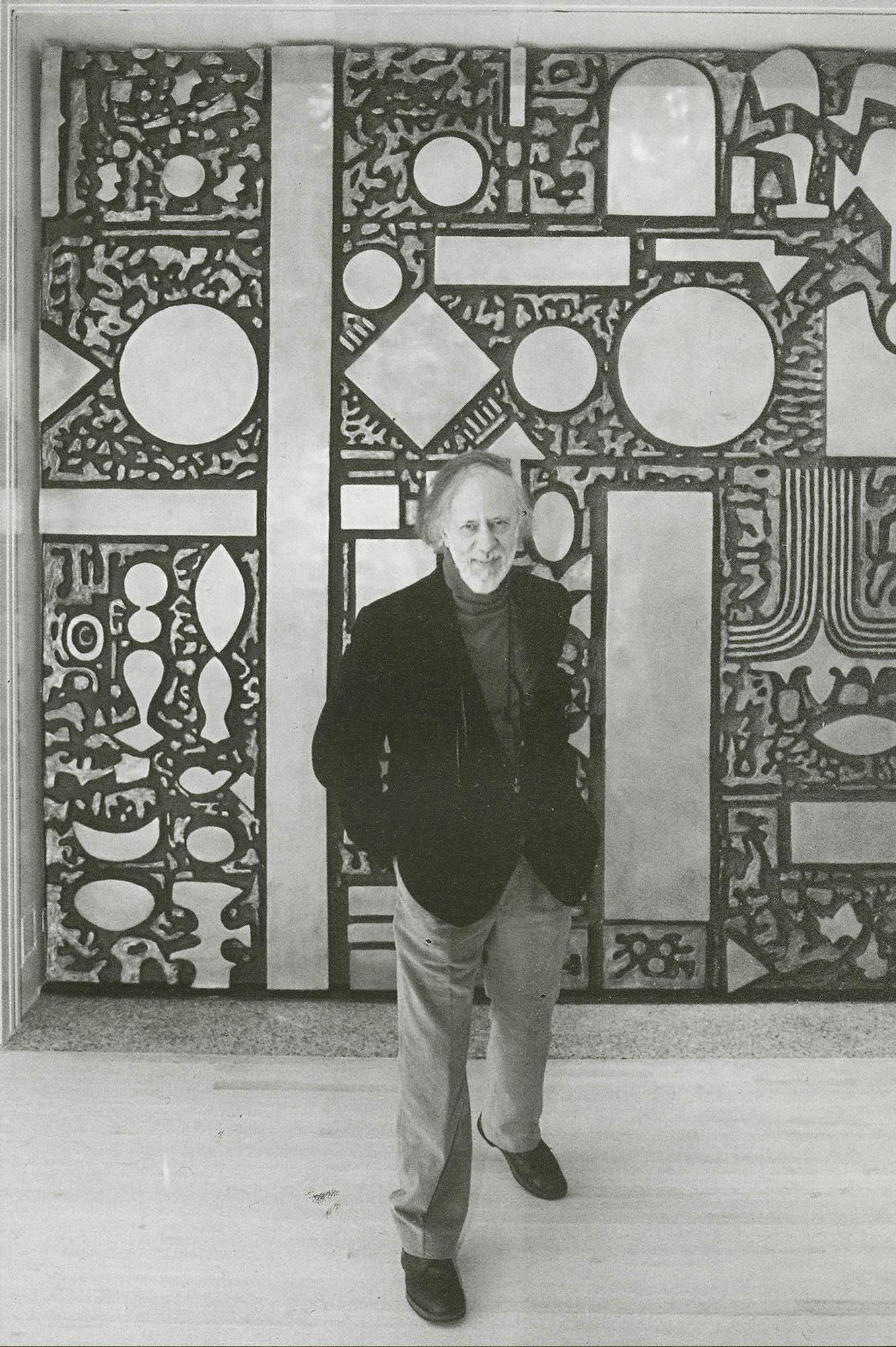
Richard Pousette-Dart with Cathedral, 1990, bronze, 120 x 120 x 11 in. (304.8 x 304.8 x 27.9 cm). Indianapolis Museum of Art, Ind., Gift of Robert S. Ashby, Susan Gatch Ashby, and Richard Pousette-Dart (1991.40)